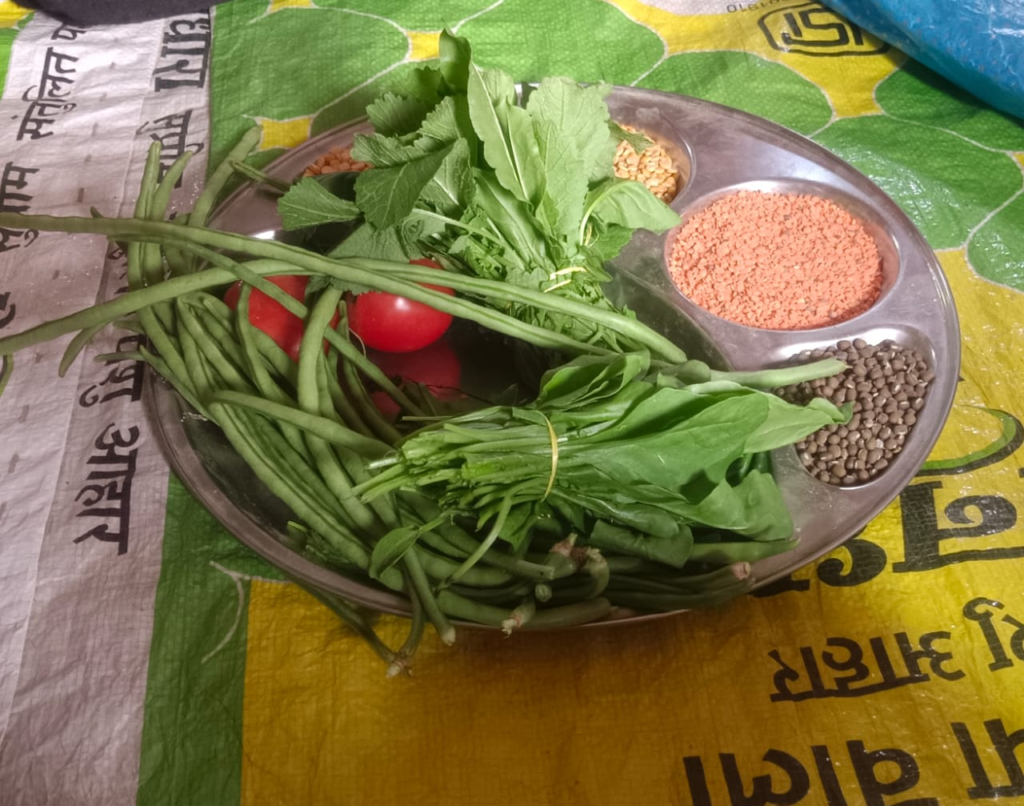On one fine Saturday evening, a relative asked me, “So, Kavya… how is work going?” After rounds of counselling and not seeing any improvements in the IFA (iron folic acid … pill to improve haemoglobin level) pill intake among pregnant women, I spoke some harsh words, borne of frustration.
“These women don’t want to have healthy children. They are more than happy being anemic, they are more than happy being treated as second-class citizens in their houses, these women want to stay in their current life and circumstances.”
Taken aback by my outburst, the relative calmed me down and asked me to reflect on what I was saying. “Check whether this is the truth, and if it is the truth, ask, what keeps these women thriving? What has been working for them so far?”
The Big Achar Jar
After some rounds of introspection, I came to realise that in rural Uttar Pradesh, where traditions is a big achar jar, and every decision is marinated in layers of family dynamics, economic constraints, culture, and survival, the question “Why do people do what they do?” becomes central to understanding and working on behaviour change.
As part of the Poshan Prerana programme here, at the Aga Khan Foundation, my work involves reducing anemia in pregnant women and malnutrition in children and adolescents by providing guidance on nutrition, health checkups, and self-care, amongst other things. Yet, despite well-intentioned advice and scientifically backed recommendations, many women continue practices that appear to contradict their health needs and our efforts to help them. This blog explores why that happens and the reflections that have emerged from working closely with these women, their families, and communities.
Noticing behaviour is very easy, understanding it equally hard. Behavior does not emerge from isolated choices; it is a jar of achar—layered, pickled in the influences of culture, family dynamics, limited resources, and deeply held personal beliefs. Just like achar, where spices and ingredients slowly meld together over time, the behavior we see is the result of countless forces working together.
For example, most women eat last after serving the entire family, leaving themselves with limited portions of less nutritious food. To address this, the program distributed tiffin dabbas, recommending women keep aside food for themselves before serving the family. However well-intentioned, the women struggled to implement this change. This simple recommendation feels unattainable for some.

Advice That Clashes With Reality – Kya Se Kyun Tak
Advice often assumes an ideal scenario—where women have autonomy, time, and resources. But in practice, women’s lives are dictated by different mechanisms.
For instance, asking women to set aside food for themselves works in households where resources are sufficient. But in homes where ten rotis must feed six heads, mothers prioritize their children’s and husbands’ hunger over their own. At the heart of many decisions, especially in resource-scarce environments, is survival. This isn’t just a matter of physical needs but of emotional and social survival.
When I advise women to set aside food for themselves, it often clashes with deeply rooted survival mechanisms that go beyond nutrition—they are about belonging, identity, and fulfilling a role within the family structure. In this context, tradition becomes a mechanism of survival. For these women, adhering to traditional roles, such as eating last or sacrificing their health for others, is a way to maintain social cohesion and family harmony.
It’s not just about food or nutrition; it’s about maintaining their position in a complex family ecosystem – they would not risk being seen as selfish or unworthy of respect, which, in a deeply relational society, can feel like a threat to their social existence.
The Health-time Vortex
During a counselling session, a young pregnant woman shared her struggle with iron tablets, saying they made her nauseous. She was hesitant to continue taking them despite repeated advice. When I asked how she felt after skipping them for a few days, she mentioned feeling “normal.” She said that she doesn’t know how or what or why anemia and long term benefits. All she knows is it causes her discomfort now.
The perception of health is intrinsically linked to time. When we talk about anemia or malnutrition, we often frame it as a long-term health issue, but in rural communities, health is lived in the present. Fever, cough, vomiting are real and present—they can’t be ignored or discounted. The lack of blood – I dont know? Who? What? So?
Iron supplementation, for example, may be prescribed to address future complications, but the discomfort it causes now is more tangible and immediate. From the women’s perspective, the future is abstract and distant. The long-term benefits of iron pills don’t hold the same weight as the immediate, visceral experience of nausea. In such a context, the advice to prioritize iron intake becomes secondary to addressing their day-to-day physical needs—getting enough rest, making sure their children eat, and managing the household.
The Influence Of Gatekeepers
Pregnant women do not act in isolation; their decisions are shaped by elders and male family members. For example, if a mother-in-law insists on applying mustard oil to the baby’s navel, the mother will follow, even if it contradicts medical advice. Asking them to break away from these norms—to eat first, to prioritize their own health, to not do something that is told to her and known to her—is asking them to renegotiate power in their homes and communities and is a monumental shift.
These “gatekeepers” aren’t oppressive in most cases. In many cases, these figures hold wisdom, provide protection, and ensure survival within their families. They are loving parents, grandparents and their family. Why your word over theirs?
Resistance Is Not Rejection
Resistance to change is often misinterpreted as rejection of advice. In reality, resistance stems from fear, lack of trust, or overwhelming life conditions. One woman once told me, “I know I should eat more, but if I ask for extra food, what will my saas-sasur think? They’ll say I’m greedy.” When she was refusing to eat food, she was not rebelling against me. It is not personal. She has bigger things on her plate right now.
Opening The Jar Of Achar
As I reflect on that Saturday evening and my moment of frustration, I realize how far my understanding has come. These women are not ‘choosing’ anemia or rejecting help. They are simply women living and abiding rules as they know best. Perhaps, If I were to revisit that conversation with my relative, I would say, “It’s not that these women don’t care; they care deeply. But their decisions are often rooted in a context I don’t fully understand yet. Our role is to meet them where they are and co-create solutions that respect their realities.”
For anyone working in behaviour change, the lesson is clear:
Change happens slowly and collaboratively. It starts with meeting people where they are, listening deeply, and finding the smallest steps forward together. The frustration I felt back then has been replaced by a deep sense of empathy and patience. Change, I’ve learned, is neither linear nor immediate.





0 Comments